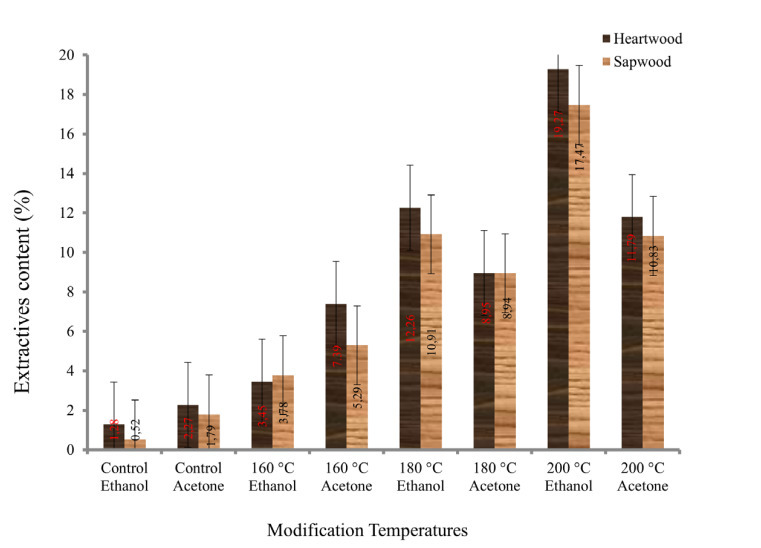Archive
Online first
Current issue
Instructions for Authors
Guide for authors
Peer Review Policy
Research Ethics Policy
Crossmark Policy
Ghostwriting and Guest Authorship
Copyright
Open Access Policy
Plagiarism
About the Journal
Aim and Scope
Scientific Board
Publisher
Editorial Board
Indexing in databases
Personal Data Protection
Repository policy
Contact
ORIGINAL PAPER
Thermal modification and its influence on the chemical composition of Daniellia oliveri (Rolfe) Hutch & Dalziel wood from Ghana
1
Technical and Vocational, Mampong Technical College of Education, Ghana
2
Office of the Vice-Chancellor, University of Education, Winneba, Ghana
3
Wood Science and Technology Education, Akenten Appiah Menka University of Skills Training and Entrepreneurial Development, Ghana
4
Department of Wood Technology,, Tamale Technical University, Ghana
Submission date: 2024-12-29
Final revision date: 2025-05-08
Acceptance date: 2025-07-18
Online publication date: 2025-08-14
Corresponding author
Issah Chakurah
Technical and Vocational, Mampong Technical College of Education, MAMPONG TECHNICAL COLLEGE OF EDUCATION, P.O.BOX 31, MAMPONG, Ghana
Technical and Vocational, Mampong Technical College of Education, MAMPONG TECHNICAL COLLEGE OF EDUCATION, P.O.BOX 31, MAMPONG, Ghana
Drewno 2025;68(216)
KEYWORDS
TOPICS
- wood science: anatomy, biology, chemistry, physics
- wood mechanical and chemical technology, inter alia, sawmilling, composite wood products, wooden construction, furniture making, wood pulp, paper making
- material engineering, biocomposites, nanocomposites
- material management
- wood-based industries economics
- other
ABSTRACT
Thermal modification of wood is a sustainable treatment process that enhances its durability, dimensional stability, and resistance to biological degradation. This study investigates the chemical transformations of Daniellia oliveri wood, a lesser-utilized species, subjected to thermal modification at 160 °C, 180 °C, and 200 °C. Utilizing standards set by the Technical Association of Pulp and Paper Industry (TAPPI), the chemical composition of sapwood and heartwood was analyzed. Results reveal that hemicellulose content declined significantly with increasing temperature, with reductions of up to 34.94% in sapwood and 30.77% in heartwood. Lignin content increased proportionally, reflecting the thermal degradation of hemicellulose and cellulose and the relative enrichment of lignin. Similarly, extractive content, measured using acetone and ethanol, increased markedly, with the highest values observed at 200 °C, indicating enhanced migration and formation of extractable compounds. Cellulose content demonstrated stability, with modest increases, while holocellulose content showed a progressive decline due to hemicellulose degradation. These findings underscore the potential of thermal modification to enhance the performance of Daniellia oliveri wood, particularly its resistance to biodegradation and moisture. By improving its chemical properties, thermal treatment positions this species as a viable alternative to more durable yet overexploited tropical hardwoods, supporting sustainable forestry and expanding its market potential. The study concludes that thermal modification offers an environmentally friendly and economically advantageous approach to enhancing the utility of lesser-utilized wood species for high-value applications.
We process personal data collected when visiting the website. The function of obtaining information about users and their behavior is carried out by voluntarily entered information in forms and saving cookies in end devices. Data, including cookies, are used to provide services, improve the user experience and to analyze the traffic in accordance with the Privacy policy. Data are also collected and processed by Google Analytics tool (more).
You can change cookies settings in your browser. Restricted use of cookies in the browser configuration may affect some functionalities of the website.
You can change cookies settings in your browser. Restricted use of cookies in the browser configuration may affect some functionalities of the website.



